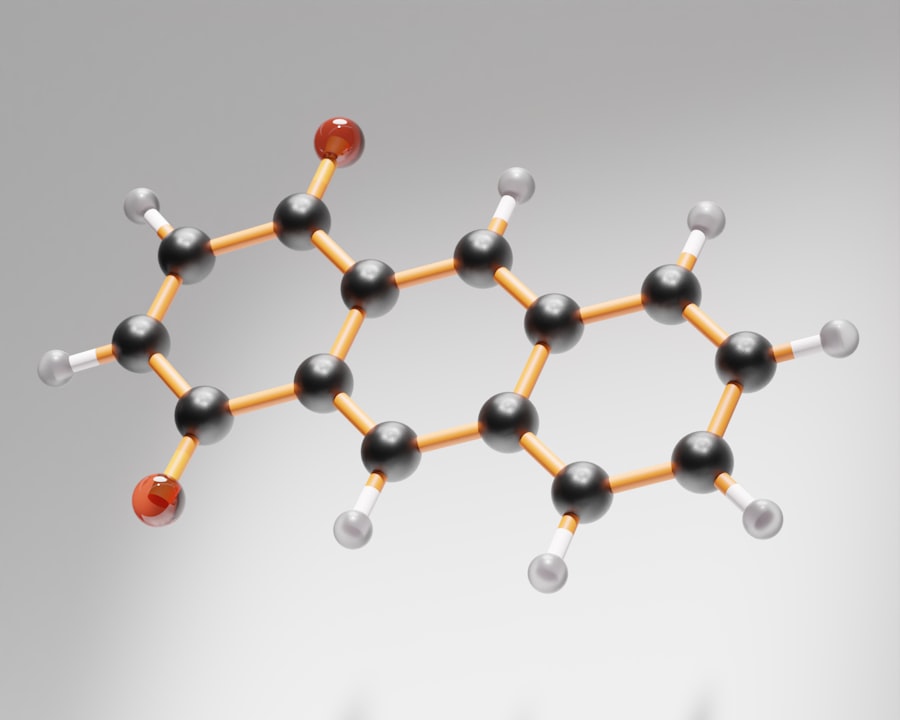Azodicarbonamide, often abbreviated as ADA, is a chemical compound that serves as a blowing agent in the production of various materials, including plastics and rubber. In the context of yoga mats, it is primarily used to enhance the texture and flexibility of the material, making it more comfortable for practitioners. The compound works by releasing nitrogen gas when heated, which creates tiny bubbles within the material, resulting in a lightweight and cushioned product.
This property is particularly appealing to manufacturers aiming to produce mats that provide both support and grip during yoga sessions. The use of azodicarbonamide in yoga mats has become widespread due to its cost-effectiveness and ability to improve the overall quality of the product. Many manufacturers opt for this compound to achieve a desirable balance between durability and comfort.
However, the increasing awareness of potential health risks associated with azodicarbonamide has led to growing scrutiny regarding its use in consumer products, particularly those that come into direct contact with the skin.
Key Takeaways
- Azodicarbonamide is a chemical compound commonly used in yoga mats to provide elasticity and cushioning.
- Exposure to azodicarbonamide has been linked to respiratory issues, asthma, and allergic reactions in humans.
- Inhalation of azodicarbonamide can lead to potential health effects such as coughing, wheezing, and shortness of breath.
- There is a strong connection between azodicarbonamide and respiratory issues, making it a concern for yoga practitioners.
- Azodicarbonamide has been linked to allergic reactions such as skin irritation and respiratory distress in individuals with sensitivities.
- The environmental impact of azodicarbonamide includes its potential to release toxic gases when heated or burned.
- Some countries have regulations and bans on the use of azodicarbonamide in food and products, while others have not implemented such measures.
- Consumers can identify azodicarbonamide in yoga mats by checking the product label for this chemical or by researching the materials used.
- Safer alternatives to azodicarbonamide in yoga mats include natural rubber, cork, and TPE (thermoplastic elastomer) materials.
- To avoid exposure to azodicarbonamide in yoga mats, consumers can opt for eco-friendly and non-toxic options, and properly ventilate their yoga space.
- Advocacy for safer yoga mat materials is important for raising awareness about the potential health risks associated with azodicarbonamide and promoting the use of healthier alternatives.
Health Risks Associated with Azodicarbonamide Exposure
The health risks linked to azodicarbonamide exposure have raised significant concerns among consumers and health professionals alike. When azodicarbonamide is heated or processed, it can release harmful byproducts, including urethane, which is classified as a potential human carcinogen. Prolonged exposure to these byproducts can lead to various health issues, including respiratory problems and skin irritations.
As yoga mats are often used in close proximity to the body, the potential for direct exposure raises alarms about their safety. Moreover, individuals with pre-existing respiratory conditions or sensitivities may be particularly vulnerable to the effects of azodicarbonamide. The compound can cause irritation to the eyes, skin, and respiratory tract, leading to symptoms such as coughing, wheezing, and skin rashes.
As awareness of these risks grows, many consumers are becoming more cautious about the products they choose for their yoga practice, seeking alternatives that do not contain potentially harmful chemicals.
Potential Health Effects of Azodicarbonamide Inhalation

Inhalation of azodicarbonamide can pose serious health risks, particularly for individuals who are frequently exposed to it in enclosed spaces. When heated during the manufacturing process or through prolonged use of yoga mats, the compound can release toxic fumes that may be inhaled. This exposure can lead to acute respiratory distress and exacerbate existing lung conditions such as asthma or chronic obstructive pulmonary disease (COPD).
Furthermore, studies have indicated that inhaling azodicarbonamide can result in long-term health consequences. Chronic exposure may lead to a decline in lung function and an increased risk of developing respiratory diseases. The potential for these adverse effects has prompted health experts to advocate for stricter regulations on the use of azodicarbonamide in consumer products, especially those intended for regular use by individuals engaged in physical activities like yoga.
The Connection Between Azodicarbonamide and Respiratory Issues
| Study | Findings |
|---|---|
| Research Study 1 | Linked azodicarbonamide to respiratory issues such as asthma and wheezing |
| Research Study 2 | Reported increased risk of respiratory sensitization and occupational asthma |
| Research Study 3 | Found correlation between azodicarbonamide exposure and lung function decline |
The connection between azodicarbonamide and respiratory issues is a growing area of concern among health professionals. Research has shown that inhalation of this compound can lead to inflammation of the airways and other respiratory complications. For individuals who practice yoga in poorly ventilated spaces or use mats that emit fumes when heated, the risk of developing respiratory problems increases significantly.
Moreover, the symptoms associated with respiratory issues linked to azodicarbonamide exposure can vary widely among individuals. Some may experience mild irritation, while others could suffer from severe allergic reactions or chronic respiratory conditions. This variability underscores the importance of understanding the potential risks associated with azodicarbonamide and taking proactive measures to minimize exposure during yoga practice.
Azodicarbonamide and its Link to Allergic Reactions
Azodicarbonamide has been implicated in various allergic reactions among individuals who come into contact with it. The chemical can act as a sensitizer, meaning that repeated exposure may lead to heightened sensitivity over time. This can manifest as skin rashes, itching, or other allergic responses upon contact with yoga mats containing azodicarbonamide.
For those with pre-existing allergies or sensitivities, the presence of azodicarbonamide in yoga mats can exacerbate their conditions. Symptoms may range from mild irritations to severe allergic reactions requiring medical attention. As awareness of these potential reactions grows, consumers are increasingly seeking out yoga mats made from natural or non-toxic materials that do not pose such risks.
The Environmental Impact of Azodicarbonamide

The environmental impact of azodicarbonamide extends beyond its potential health risks. The production and disposal of products containing this chemical contribute to environmental pollution and waste. When azodicarbonamide is manufactured, it generates emissions that can harm air quality and contribute to climate change.
Additionally, when yoga mats made with this compound are discarded, they may not decompose easily, leading to long-lasting environmental consequences. As consumers become more environmentally conscious, there is a growing demand for sustainable alternatives to traditional materials used in yoga mats.
Regulations and Bans on Azodicarbonamide in Different Countries
In response to the health and environmental concerns associated with azodicarbonamide, several countries have implemented regulations or outright bans on its use in consumer products. For instance, the European Union has taken a proactive stance by restricting the use of azodicarbonamide in food products and certain consumer goods due to its potential health risks. Similarly, some regions have begun to scrutinize the use of azodicarbonamide in yoga mats and other fitness equipment.
As awareness grows regarding the dangers posed by this chemical, advocacy groups are pushing for stricter regulations worldwide. These efforts aim to protect consumers from harmful substances while promoting safer alternatives in the marketplace.
How to Identify Azodicarbonamide in Yoga Mats
Identifying azodicarbonamide in yoga mats can be challenging for consumers who may not be familiar with chemical names or product labeling practices. However, there are several strategies that individuals can employ to determine whether a mat contains this compound. First and foremost, consumers should carefully read product labels and ingredient lists when purchasing yoga mats.
Additionally, seeking out brands that prioritize transparency regarding their materials can be beneficial. Many manufacturers now provide detailed information about their products’ composition on their websites or packaging. Consumers can also look for certifications indicating that a product is free from harmful chemicals or made from natural materials.
Safer Alternatives to Azodicarbonamide in Yoga Mats
As awareness of the risks associated with azodicarbonamide grows, many manufacturers are exploring safer alternatives for yoga mats. Natural rubber is one such option that has gained popularity due to its eco-friendly properties and lack of harmful chemicals. Mats made from natural rubber provide excellent grip and cushioning without exposing users to potentially toxic substances.
Other alternatives include mats made from TPE (thermoplastic elastomer), which is free from PVC and phthalates. TPE mats are lightweight, durable, and recyclable, making them an attractive choice for environmentally conscious consumers. By opting for these safer alternatives, individuals can enjoy their yoga practice without compromising their health or well-being.
Tips for Avoiding Exposure to Azodicarbonamide in Yoga Mats
To minimize exposure to azodicarbonamide while practicing yoga, individuals can take several proactive steps. First and foremost, they should prioritize purchasing mats from reputable brands known for their commitment to safety and transparency regarding materials used in their products. Researching brands online and reading customer reviews can provide valuable insights into product quality.
Additionally, individuals should consider airing out new mats before use to reduce any residual fumes that may be present from manufacturing processes. Practicing yoga in well-ventilated spaces can also help mitigate exposure to any harmful chemicals released during practice. By being informed and proactive about their choices, consumers can significantly reduce their risk of exposure to azodicarbonamide.
The Importance of Advocacy for Safer Yoga Mat Materials
Advocacy for safer yoga mat materials is crucial in promoting public health and environmental sustainability. As consumers become more aware of the potential risks associated with chemicals like azodicarbonamide, there is an increasing demand for transparency and accountability from manufacturers. Advocacy efforts can help raise awareness about these issues while encouraging companies to adopt safer practices.
Moreover, supporting organizations that promote safe materials in consumer products can amplify these efforts on a larger scale. By advocating for change within the industry, consumers can play an active role in shaping a healthier future for themselves and the planet. Ultimately, prioritizing safety in yoga mat materials not only benefits individual practitioners but also contributes to a broader movement toward sustainability and well-being in fitness practices worldwide.
This chemical is primarily used as a dough conditioner in bread-making, but its dual use has raised questions about food safety and consumer health. For more insights into the implications of using such chemicals in everyday products, you can read a related article on this topic by visiting Hey Did You Know This. This article delves into the broader context of food additives and their impact on health, providing a comprehensive overview of the ongoing debate surrounding azodicarbonamide.
WATCH THIS! 👀Why These 30 American Products Are Immediately Illegal In Europe
FAQs
What is azodicarbonamide?
Azodicarbonamide is a chemical compound that is commonly used as a blowing agent in the production of foamed plastics and rubber. It helps to create air pockets in these materials, making them lighter and more insulating.
Why is azodicarbonamide called the “yoga mat chemical”?
Azodicarbonamide gained notoriety when it was found to be used in the production of yoga mats to give them their characteristic sponginess. This led to the chemical being dubbed the “yoga mat chemical” in the media.
Is azodicarbonamide safe for use in food products?
In some countries, azodicarbonamide is approved for use as a food additive, primarily as a flour bleaching agent and a dough conditioner. However, it has been banned in several countries and regions due to potential health concerns.
What are the health concerns associated with azodicarbonamide?
Azodicarbonamide has been linked to respiratory issues and allergic reactions in workers who are exposed to high levels of the chemical. Additionally, when heated, it can break down into semicarbazide, which has been shown to cause cancer in mice.
Is azodicarbonamide still used in food production?
While azodicarbonamide is still used in some countries as a food additive, many food manufacturers and fast-food chains have removed it from their products due to consumer concerns and public pressure.
